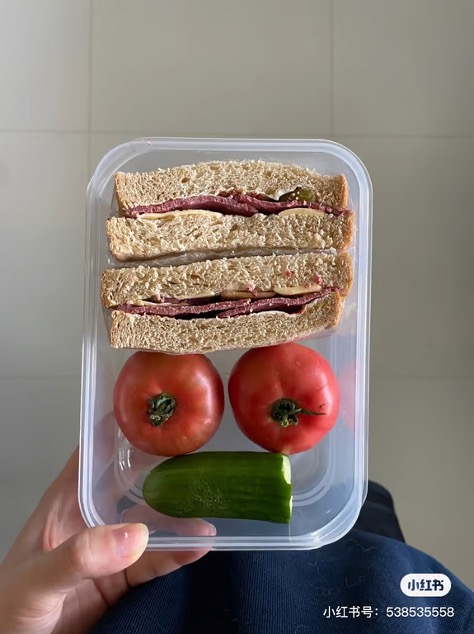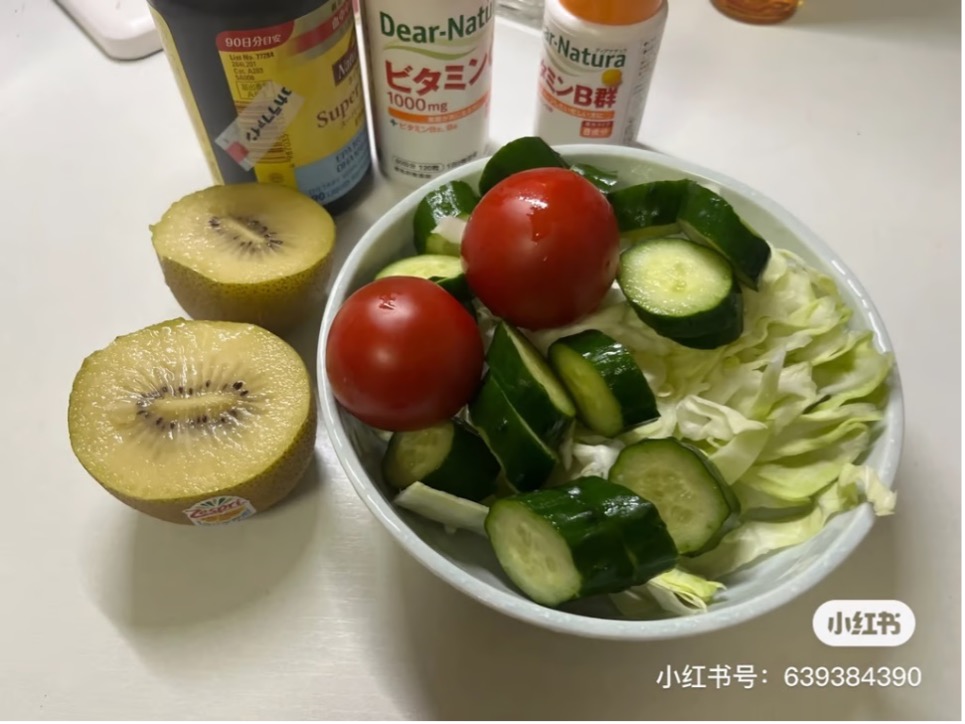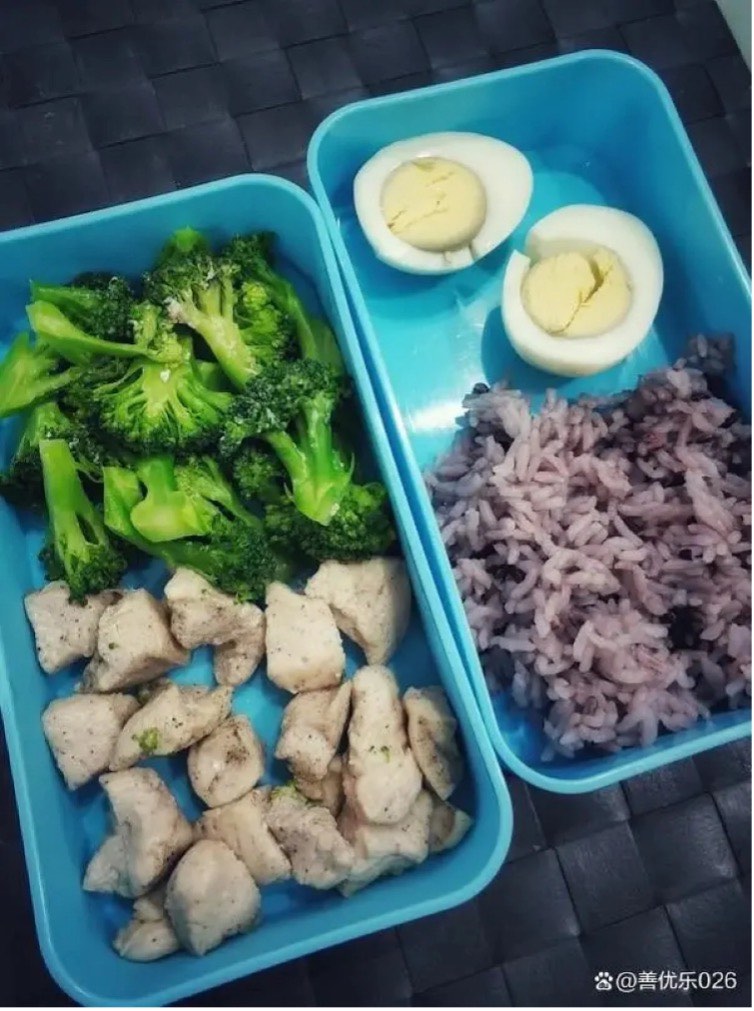Do you live to eat? Or do you eat to live?
Dione Lucas once said – ‘The preparation of good food is merely another expression of art, one of the joys of civilized living.’ Most Europeans, Americans, and now quite a few Chinese will say otherwise. What started on a train in Switzerland has become a trending topic on the internet, and, more so in China. On May 28th, on a train ride in Switzerland, a Chinese woman posted a video of a European lady preparing her lunch. It was, what happened next that took the internet by storm. It took the lady merely 5 minutes to ‘prepare’ her lunch, by assembling a ‘bag of lettuce’ and ‘slices of ham’ alongside a mustard dip. It might sound normal to an American or a European but could bewilder an average Chinese.

Although the pith of the matter is not something new, this incident gave rise to a trend – the ‘white people’s food’ (白人饭 báirén fàn) in China. Uncooked or steamed vegetables, under seasoned meat, ham, crackers, cheese dips and cold bread- are what the Chinese call ‘the white people’s food.’ In an instant, several overseas Chinese students and young professionals started to share similar moments of food culture shock through pictures of the luncheons of their ‘white’ colleagues and peers. The Chinese were appalled by the flavourless and low-effort lunches of the whites. Mockery and concern went hand in hand, as the amused Chinese shared memes and opinions on social media platforms like Weibo and Xiaohongshu exclusive to China. In no time at all, the trend reached Twitter and TikTok too.
A Weibo user shared a picture of meat, cheese, and crackers along with the caption: “The point of the white people’s meal is to learn what it feels like to be dead, but I’ve taken two bites and it was so bad it made me realize how alive I am.” Many users seconded it and explained that white people’s food intended to remind oneself at work that the workplace is not a place of recreation; that the bland food is a replica of their job. A Chinese blogger even went so far, as to call these kinds of meals the ‘lunch of suffering.’ Another Xiaohongshu user commented: “It is a handful of oatmeal mixed with low-fat yoghurt, with half an apple and a carrot. If such a meal is to extend life, what is the meaning of life?”
But what started as mockery soon turned into praise and acceptance. Various Chinese outlets have reported a surge in search for recipes and cooking videos of meals made with very few ingredients, on social media. It is a colossal shift from the usual trends and searches on platforms like Xiaohongshu. Pictures and short videos of white people’s food on Xiaohongshu gained substantial number of views in a brief period, where surprisingly – or not, positive responses outnumbered negative ones. The appreciation and approval were not only seen on the internet, but also seen inside the kitchens.

But what made the Chinese suddenly adapt to the food that had initially appalled them? The ‘white people’s food’ is a facile 5-minute- put-in-a-sandwich-bag ready lunch, in stark contrast to the regular Chinese meals. It is well known around the globe that Chinese cuisine has one of the most flavourful, high-effort, and wholesome meals out there. The Chinese, love their food and do not mind putting in the time and using complex techniques to cook their meals. But their work culture and ethics are more demanding than their food culture. Most working professionals and university students in China have a 9-9-6 schedule (9 to 6 for 6 days a week). They are worn out and have little to no time for sleep, let alone preparing three-course lunches. So, coming across the white people food is like a boon for many of those who are trying to survive and thrive in the hustle culture. Not to mention the number of ingredients and utensils needed; also, the post-cooking clean-up is not very feasible for workers and students alike.
Moreover, a good share of supporters are health-conscious people. They vouched for – how beneficial such a diet is for the mind and the body. They believe white people’s food is calorie-deficit and less likely to cause chronic diseases. Whereas Chinese meals are heavy on carbs and proteins and induce drowsiness post-lunch. Hence it was natural for working professionals to adopt such inherently light food that helps them stay focused and spry.

But there is more to it than what meets the eye. The psychological reasoning behind the surge in discussion about China’s ‘white people food’ gives us a more profound insight into the topic. The ‘white people food’ trend adds weightage to the already existing and trending ‘lying flat’ and ‘let it rot.’ People trying to de-normalize the hustle culture have adopted and propagated the mentioned trends. By ‘lying flat’ they intend to put in no extra work of any kind and ‘let it rot’ further by doing just the bare minimum at work.
According to ANI News, the ‘end justifies the means’ work culture of China has been victimizing the workers. It has sadly led them to embrace even the negative situations and do not much about it. Hence ‘white people’s food’ was icing on the cake for them. While for some, food is nothing more than a means to keep one alive; others believe in the ‘putting little effort into eating (吃饭糊弄学 chīfàn hùnòng xué)’ ideology. For instance, they do not mind having one-pot meals, as long as it does not demand much effort. But as there are two sides to a coin, most people frown upon such a dull approach to life. A Xiaohongshu user commented that: “Having delicious meals was one of the very few things they looked forward to daily and that they couldn’t let go of that fact.” One even quoted that, ‘It is depressing how the mass feels like surrendering to the white people’s food for the sake of convenience and that they should consider implementing some serious changes in their lifestyle.’

Before the world moves on to another day and another trend, let us take a moment to heed this trend that has drastically changed the look of, if not many, then, some of the lunch boxes of China. This one trend has many faces to it. From providing something new to laugh at, to causing the Chinese to rethink their food preferences, the ‘white people’s food’ truly stirred the Chinese food habits. It might not have fully changed the Chinese palate, but it at least broadened people’s outlook on food. And who knows, even helped a few by becoming their go-to lunch on days they feel sluggish. Nonetheless, for many, it was a reminder of how vivid their life is and that being ardent about food is something one should never let go of. Although there are comparatively more paramount topics to be debated and questioned on, it is good to follow from time-to-time what Orson Welles had formerly said- “Ask not what you can do for your country. Ask what is for lunch?”
Written by – Shivaanshi Singh
Edited by – Mrunmayee Patwardhan




